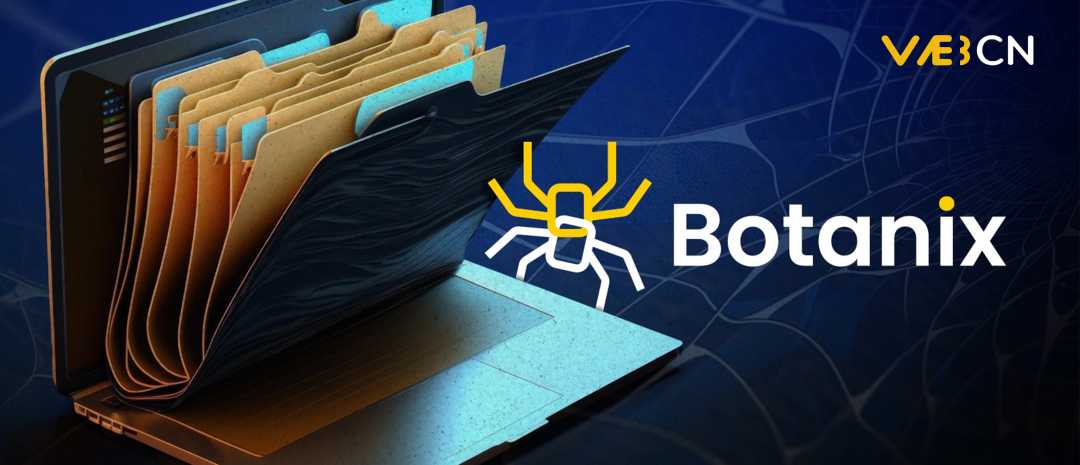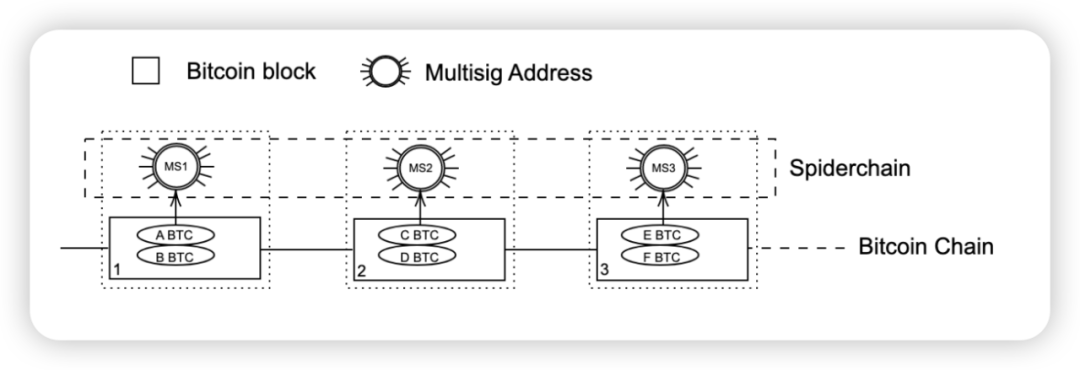
Editor | Chainchen@Web3CN.Pro
Table of Contents
1. Project Introduction
2. Project Vision
- Is the SEC repeatedly losing in cryptocurrency cases because the US Department of Justice is intentionally balancing its power?
- Moldy food, no air conditioning, extremely poor hygiene, exposing the ‘maggot-like’ prison life of SBF.
- What other projects are worth paying attention to in addition to Celestia’s coin airdrop and modular blockchain?
3. Development Roadmap
4. Team Background
5. Funding Information
6. Project Architecture
- The Spiderchain
- Botanix Block
- Botanix EVM
- Orchestrators
- Security
7. Development Achievements
- Community Status
8. Economic Model
9. Advantages and Risks
1. Project Introduction
Bitcoin is currently the largest and most well-known cryptocurrency, famous for its decentralized structure and blockchain technology. Due to its high degree of decentralization and security, Bitcoin is considered the global reserve cryptocurrency. However, Bitcoin has some limitations in terms of composability and scalability. With the continuous development of solutions, the emergence of Ethereum introduced a blockchain with a Turing-complete programming language, and its composability created a decentralized application ecosystem that challenges the scalability of the underlying layer. The development of Ethereum Layer 2 has made the Ethereum ecosystem reach an unprecedented prosperity. However, how to introduce smart contracts into Bitcoin is still an unresolved issue. Due to the relatively low application and value of Bitcoin’s Layer 2, there is still great development space in building Layer 2 on Bitcoin.
Currently, there are different technologies in the BTC ecosystem to build BTC Layer 2, including state channels, drive chains, multi-signature rollups, and the possibility of implementing ZK and OP rollups through Bitcoin soft fork proposals. The Lightning Network and Liquid multi-signature are already successful BTC Layer 2 solutions, and this article introduces a new concept – the Botanix Protocol.
The Botanix Protocol is a decentralized chain solution built on top of BTC. It uses the basic principles of Lightning Network to run the Ethereum Virtual Machine (EVM). Botanix adopts an account-based model similar to Ethereum to replace Bitcoin’s Unspent Transaction Output (UTXO) model. Every Botanix full node will run the BTC core protocol as well as the Botanix Protocol.
2. Project Vision
Botanix Labs proposes to build a second layer on top of Bitcoin, with full Ethereum Virtual Machine (EVM) equivalence. By using Bitcoin as the most decentralized and secure underlying layer, the second layer will open up new possibilities for composability, ecosystem, and functionality of Ethereum smart contracts. It introduces Spiderchain – a second-layer design on top of Bitcoin, aiming to optimize decentralization and provide users with broader application possibilities.
III. Development Roadmap

IV. Team Background
The team currently consists of more than ten core members, many of whom have been involved in the cryptocurrency field for over ten years, including former employees of Blockstream. The founder, Willem, is a dual degree graduate in electrical engineering and business economics from Belgium. The team has a background in technology and marketing, but is generally average.

V. Financing Information
None at the moment.
VI. Project Architecture
Currently, in the second layer and sidechain of BTC, the Lightning Network provides decentralized second layer technology but is limited by liquidity, ecosystem, and BTC’s UTXO constraints. Federated multi-signature and Op Rollup provide a combination and flexibility but are limited by centralization.
The Botanix protocol is built on top of Bitcoin’s second-layer Ethereum Virtual Machine (EVM). Botanix adopts the PoS (Proof-of-Stake) consensus mechanism, requiring participants to stake actual bitcoins on the Bitcoin layer to protect the entire second layer. The entire protocol runs on Bitcoin. It allows users to natively use Bitcoin in any application built on the EVM. The second-layer protocol is optimized to allow anyone to participate and run full nodes. The bitcoins on Botanix will be locked in Spiderchain and secured by a series of continuous multi-signatures controlled by a random subset of Orchestrator nodes, ensuring genuine and effective participation. Therefore, moving from the Bitcoin main chain to the second layer requires additional trust assumptions: no single party controls the set of stakers. The Botanix protocol can be implemented on Bitcoin immediately without any Bitcoin Improvement Proposal.
The Botanix network introduces smart contracts that cannot be achieved on Bitcoin, similar to Lightning Network node operators, to move complex parts off-chain to ensure the correct state of the Botanix blockchain. The entire second-layer network runs as a blockchain, and other users can create new wallets and deploy smart contracts on this protocol.
The Spiderchain
Botanix introduces Spiderchain, a new mechanism for the second-layer blockchain. Spiderchain is a series of continuous multi-signature wallets created between Botanix Orchestrators. By dispersing the management of these multi-signature wallets, security is guaranteed. This continuous multi-signature chain creates a network to protect Bitcoin assets on the Botanix chain. This “moving” multi-signature chain can be seen as a form of collateral, locked in this decentralized multi-signature network, hence the name Spiderchain.
The key role of Spiderchain is to separate Bitcoin assets and the Bitcoin blockchain. By protecting Bitcoin on Botanix with a dispersed multi-signature chain, it isolates Bitcoin from the Ethereum Virtual Machine (EVM). This allows a transition from Bitcoin’s UTXO model to the account model used in the EVM.
The following figure shows a visual diagram of Spiderchain. Whenever a Bitcoin block is produced, a new multi-signature is created between different random Orchestrators.

Due to the security relying on incentives and the number of Orchestrators, all Orchestrators must provide a certain amount of collateral before participating. This collateral will be used as compensation in case of malicious behavior. The security of Spiderchain follows the proof-of-stake model, and as long as the number of malicious participants is much smaller than the other Orchestrators, the security is mathematically guaranteed.
Botanix Block
There are three main parts to the Botanix blockchain when it is running normally. First, it checks the transactions sent by users from the Bitcoin main chain to Orchestrators (this is the process of introducing Bitcoin into the Botanix network). Then, it executes the necessary state changes to create a new block. Finally, at the end of each cycle, new unspent transaction outputs (UTXO) are created to transfer assets from Spiderchain back to the main chain (this is the process of retrieving Bitcoin from the Botanix network).
Check if there are assets sent to Botanix Orchestrators. If so, perform asset introduction.
Run the consensus and state change process of Botanix. This part can be compared to block processing in Ethereum.
Check if there are assets that need to be transferred from Botanix to elsewhere. If so, perform asset retrieval. It should be noted that due to the difference in processing speed between the Bitcoin blockchain and the Botanix blockchain, in most cases, parts 1 and 3 only update the transaction pool of UTXO. The block generation speed of Bitcoin is about 10 minutes per block, while Botanix will run at a speed of about 12 seconds between each block. Between Bitcoin blocks, Botanix will generate its own blocks containing transactions on the EVM (Ethereum Virtual Machine). When a new Bitcoin block is received, Botanix executes the above steps to ensure that the transactions on the EVM chain are eventually confirmed.
Botanix EVM
Botanix runs a full Ethereum Virtual Machine (EVM) execution client, which is almost equivalent to the Ethereum network itself, as it is capable of executing all smart contracts and decentralized applications (DApps) written in Solidity and other programming languages, just like Ethereum. It does not need to generate any restrictive performance proof because its security comes from Spiderchain. Botanix EVM powers the operational environment of the Ethereum network, allowing the execution of smart contracts written in Solidity and other programming languages. By running a full EVM client, Botanix is able to support all the features of Ethereum.
Although Botanix is functionally equivalent to Ethereum, it is still an independent network with its own unique characteristics and features. For example, it adopts a different PoS consensus algorithm and leverages Bitcoin’s decentralized and economic structure.
Orchestrators
Orchestrators are key roles in the Spiderchain protocol, responsible for managing and protecting the Botanix protocol.
When entering Spiderchain, new Orchestrators need to express their interest to the current block’s Orchestrator and put a certain amount of collateral in a multisignature. This process is completed after confirmation on the Bitcoin network, and the new Orchestrator becomes a fully participating node.
When exiting Spiderchain, an Orchestrator needs to notify the current block’s Orchestrator of their intention to exit and sign an exit message. Then the exit process begins, including replacing the multisignature and returning the collateral.
If an Orchestrator exhibits improper behavior, such as inactivity, incorrect block proposals, incorrect multisignature signing, or incorrect verification, the Orchestrator faces the risk of collateral being deducted. Inactive Orchestrators will lose block rewards and may ultimately be removed. These rules ensure the normal operation and security of Spiderchain.
Security
1. Trade-off between multisignature size and collateral
There are two different security measures for funds locked in Spiderchain:
First, by design, funds are stored on the Bitcoin layer and locked in the multisignature Spiderchain. This means that even if there are malicious Orchestrator nodes, they cannot access the Bitcoin in Spiderchain without the approval of other nodes. This is because multisignature requires multiple nodes to jointly approve any fund operation.
Second, there is a security guarantee through incentive mechanisms. Each Orchestrator node needs to provide a certain amount of collateral, which is an economic guarantee. This means that they have economic incentives to ensure that they operate correctly, as they may lose some collateral if they violate rules or behave improperly. This incentive mechanism helps maintain the normal operation and security of the network.
Multisignature is a way to protect funds stored on the Bitcoin blockchain. There is a trade-off consideration for the size of the multisignature. If it is too large, signing it may take a lot of time and there may be coordination issues. In addition, if a malicious party controls the majority of the signing rights, they will be able to access all the funds in Spiderchain. Therefore, dividing the collateral into smaller multisignatures can reduce risks, but if the multisignature is too small, it may reduce the security of protecting funds from malicious attacks.
Collateral is used to ensure the proper operation of Orchestrator nodes. To participate in the Spiderchain network, Orchestrator nodes must provide a certain amount of collateral to ensure their participation. This prevents a single party from running multiple nodes and prevents Sybil attacks. If an Orchestrator node behaves improperly, such as shutting down, engaging in malicious activities, or disappearing, they will lose some collateral.
Activity refers to maintaining the normal operation of participants in the Botanix chain and the multisignature. If a participant is unresponsive for a long time, they may lose some rewards and ultimately be removed from the multisignature. At the same time, there are certain behaviors considered malicious, such as proposing incorrect blocks, incorrectly signing multisignatures, etc., which will result in a reduction in collateral.
The above measures are aimed at ensuring the security and stable operation of the Spiderchain protocol.
2. Private Key Protection
Forward security is an important attribute of cryptographic systems that protects secret keys from being leaked. In the case of Botanix, forward security means that even if an attacker gains 2/3 majority control, they will not have ownership of all the majority keys in previous multi-signatures. Instead, the attacker will only have ownership of the majority of newly generated multi-signatures in the future. This ensures that the security of previous multi-signatures is not compromised and the protocol can take appropriate measures to mitigate attacks. Through the design of Spiderchain, Botanix achieves forward security, allowing the protocol to provide a higher level of security and protect the system from potential attacks.
3. BTC Security Inheritance
The security of Botanix depends on the security of Bitcoin, particularly the security features provided by its Proof of Work (PoW) system. If the security of Bitcoin is compromised, it will also have a negative impact on the security of Botanix. Therefore, Botanix relies on the security advantages of Bitcoin’s PoW system to ensure the security of its own network. Specifically, it leverages Bitcoin to mitigate three risks in the Proof of Stake system: centralization, random validator selection, and finality.
Seven, Achievements
Twitter: 1,331 followers, average level of fan interaction
Discord: 459 members, Telegram: 469 members, activity rate is less than 20%.
Overall, the project’s community activity is average and still in the early stages.
Eight, Economic Model
None
Nine, Advantages and Risks
Advantages:
1. Security: Botanix’s security depends on Bitcoin’s PoW system, giving it security comparable to Bitcoin. Bitcoin is one of the most secure blockchain networks to date, so Botanix also benefits greatly in terms of security.
2. Decentralization: As a second-layer blockchain, Botanix continues the decentralization concept of Bitcoin, allowing anyone to participate and run full nodes. This helps maintain the decentralized nature of the network.
3. EVM Compatibility: Botanix supports the Ethereum Virtual Machine (EVM), which means it can run Ethereum-compatible smart contracts and decentralized applications, providing developers with a wide range of application possibilities.
4. Forward Security: Botanix achieves forward security through the design of Spiderchain, ensuring the security of previous multi-signatures even if an attacker gains control.
Disadvantages:
1. Dependency: Botanix’s security is highly dependent on Bitcoin’s PoW system. If the security of Bitcoin is threatened or attacked (which currently seems highly unlikely), Botanix may also be affected, meaning its security is constrained by external factors.
2. Competition: Botanix is in fierce competition in the cryptocurrency and blockchain space. Currently, there are no well-established projects in this ecosystem, so it needs to compete with other ecosystems to attract developers and users.
3. Speed: The block generation speed of Bitcoin and Botanix differs, which may result in additional waiting time for processing cross-chain transactions. While Botanix has a faster block generation speed, it is still slower compared to Ethereum.
In conclusion, as a second-layer blockchain system built on top of Bitcoin, Botanix has some advantages but also faces dependencies and competition challenges. Its security and decentralized nature make it competitive in certain aspects, but it needs to overcome technical and market barriers to achieve widespread adoption.
References
https://a-us.storyblok.com/f/1014909/x/8d64a913a6/botanix-protocol-whiteLianGuaiper.pdf
Like what you're reading? Subscribe to our top stories.
We will continue to update Gambling Chain; if you have any questions or suggestions, please contact us!